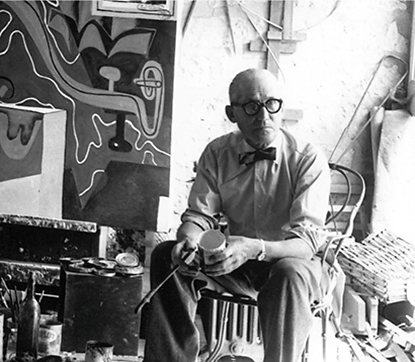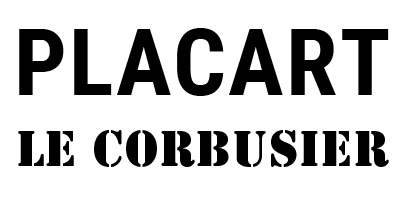Le Corbusier cannot be comprehended without including in one’s vision of him the painter, the draftsman, the graphic artist. Art was the foundation that he built upon and it was his way to try things out, to develop his arsenal of forms. In art, he explored his conceptions of space, ideas which had so far never been realized, and here he experimented with the dissolution and reconstruction of the three dimensions that could later be seen in his buildings and even in his urbanistics projects. The development that he underwent as an artist was parallel to his development as an architect. It is not without reason that he placed importance on the statement that the key to his architecture was to be found in his artistic work.
This fact can be seen most clearly in the transition from his first large group of works, the structured, puristic works, to the works in which from the end of the 1920s onwards he expanded his vocabulary of motifs to include the female body as well as his “objets à réaction poétique” such as seashells, roots, bones, and snails. Whereas in the 1920s Le Corbusier was still building the radiant, seemingly pristine architectural icons like the Villa Savoye or the Weissenhof-Häuser, starting in the 30s his constructions display elements of more sculptural, natural forms. The world of measured construction expanded to include the essence of what is organic, invented, and immeasurable: in some creations, like the chapel of Ronchamp, it even gains the upper hand.
That Le Corbusier never tired of emphasizing that he was basically and at heart a painter shows that from his perspective the public never gave sufficient recognition to this fact in the light of his fame as an architect. Indeed, in 1923, he faced the problem that the worldwide attention that the publication of Vers une architecture brought him overshadowed his significant successes as an artist. Even when painters such as Pablo Picasso or Fernand Léger – who for a time participated in Le Corbusier’s Purism movement – awarded him recognition for his artistic work, he decided initially no longer to exhibit.
Not until 1938, by this time an established architect, did he agree to a first solo exhibition devoted to Le Corbusier the artist. Further shows followed, but the appreciation of the true role and significance of his artistic work did not become established until a few years ago – forty years after Le Corbusier’s death, with the heightened perception and evaluation of the artist on the art market.
Over many years, the artistic work of Le Corbusier has become better known and increasingly popular. This has been manifested in exhibits by renowned museums, all of which also presented his artistic work in connection with his 125th birthday in 2012 and the 50th anniversary of his death in 2015: in 2013, the Museum of Modern Art in New York devoted an extensive show to LC, as did the Moderna Muset in Stockholm, or in 2012 the Pushkin Museum in Moscow. Last year, the Centre Pompidou in Paris focused on his work, and in the summer of 2014, two large shows were devoted to him for the first time in China: in Hong Kong and Shenzhen. In 2012, the Munich Pinakothek der Moderne even concentrated solely on the lithographs of his “Poème de l’angle droit.”
T. Rabara

Le Corbusier in 1953 in the
studio of his apartment in Paris.
© Keystone / Rue des archives / Michel Sima; FLC / 2019, ProLitteris, Zurich


